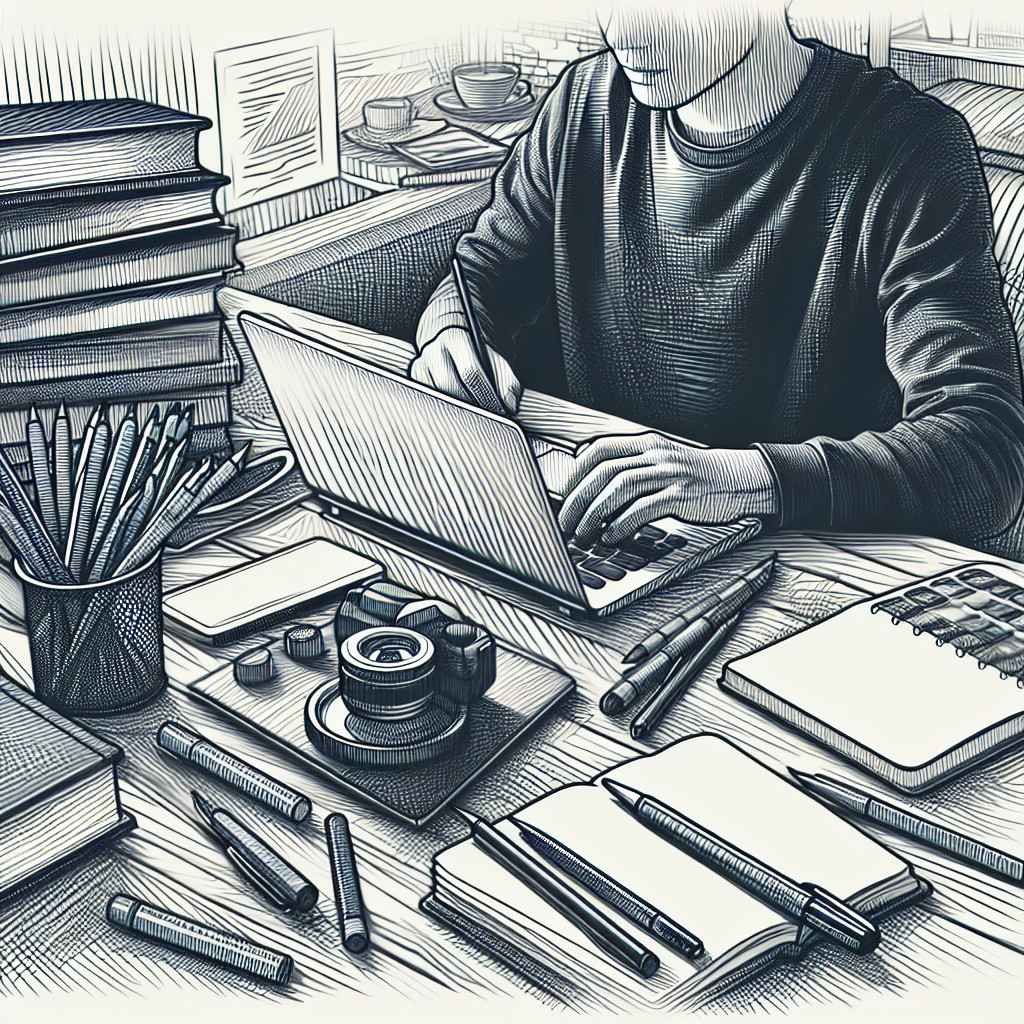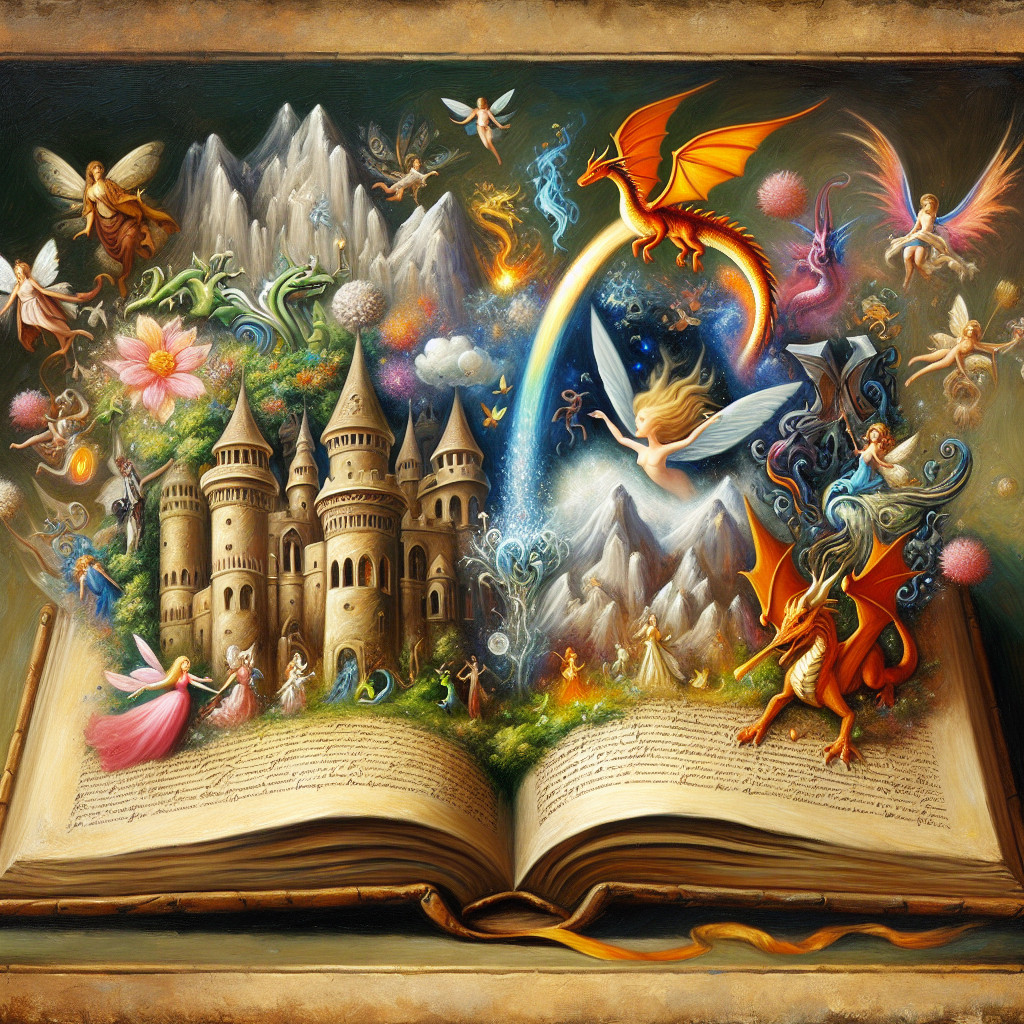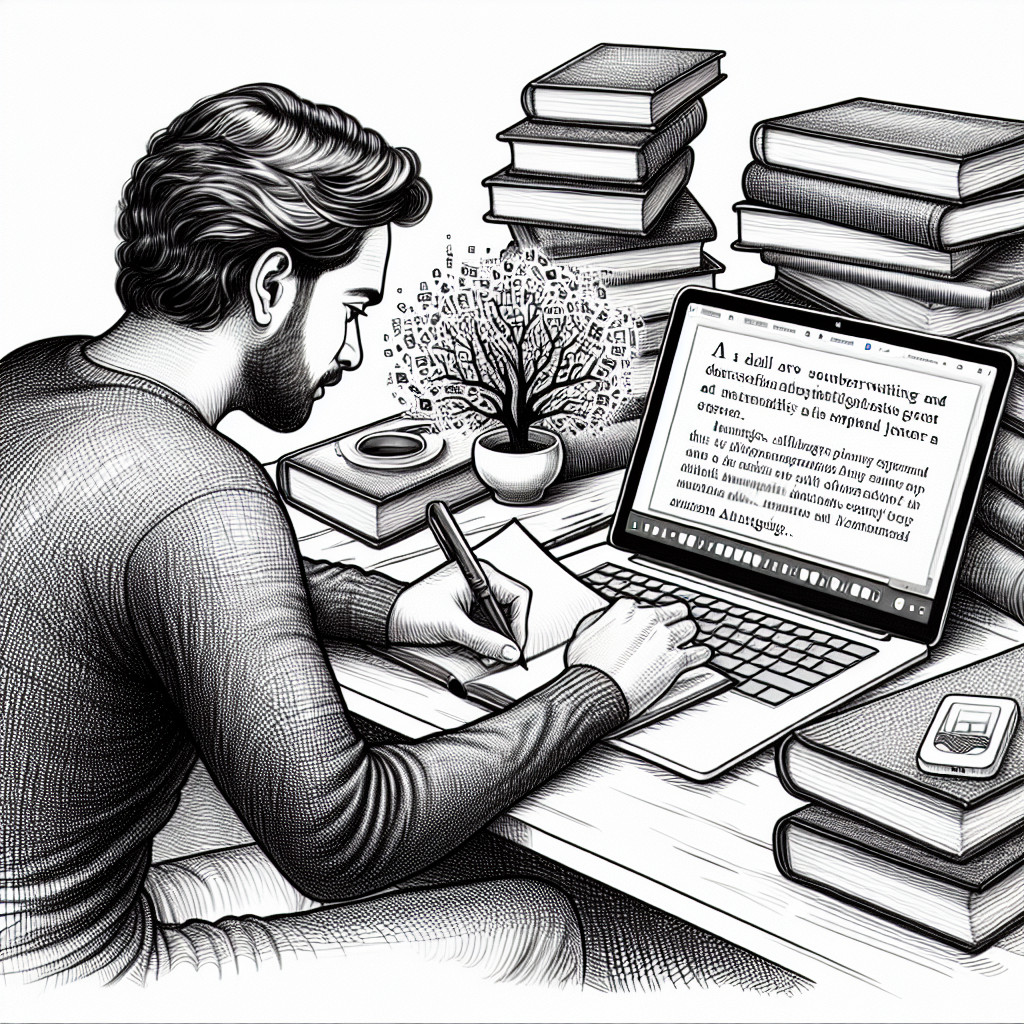First of all, if you want to write a non-fiction story without any prompting then you can try our GPT Story Writer for free. Just answer the questions the tool asks and it will produce an entire book. It one of 20 different tools we have to help authors.
We also have a guide on the best free ai story writers.
Introduction to GPT Story Writing: Cultivating Creativity with AI

As we venture further into the digital age, artificial intelligence (AI) continues to revolutionize various industries – a notable example being the realm of creative writing. Enter ChatGPT, an AI language model developed by OpenAI that has been making waves due to its remarkable narrative creation capabilities, which is our focus for this detailed guide on ‘how to write a story with ChatGPT’.
ChatGPT, also known as Generative Pre-trained Transformer 3 (GPT-3), is a cutting-edge technology that utilizes machine learning algorithms to generate human-like text. Trained on vast amounts of internet text, it can create highly convincing, original content in response to given prompts. But what makes it exceptionally exciting for budding authors and seasoned writers alike? It’s the innovative concept of being able to use a machine to craft intricate narratives – essentially harnessing AI for novel writing.
The sheer potential for ‘ChatGPT novel writing’ is truly profound. Imagine having an intelligent assistant that could help you thread together chapters of your next bestseller or collaboratively brainstorm plot twists as you tackle writer’s block. Whether for professional projects or personal endeavors, ChatGPT offers unprecedented support in the creative process.
Of course, like any powerful tool, some finesse is required to maximize its capabilities. A key aspect here lies in understanding and effectively using ‘prompt engineering’. By providing clear, concise and well-structured input to ChatGPT, you are employing a method akin to stirring the pot of creativity, guiding it to produce outputs more tailored to your desired outcomes.
In this comprehensive guide, we shall delve deeper into the potential of using ChatGPT for storytelling, from piecing together short stories to undertaking entire novel-writing projects. We will explore the practical aspects of working with ChatGPT, including valuable tips for prompt engineering and a step-by-step walkthrough of writing your very first story with this incredible AI tool.
Indeed, the age of AI-written novels is not a far-fetched idea. Aided by robust technologies like ChatGPT, writers can redefine their creative process. Stay tuned as we unravel this future of storytelling – one where man and machine collaboratively craft compelling narratives that push the boundaries of imagination.
Prompt Engineering with ChatGPT: The Art of Harnessing AI Story Generator

Prompt engineering stands as a crucial aspect when interacting with ChatGPT. Essentially, this is where our journey of ‘how to write a story with ChatGPT’ truly begins. As a user, think of yourself as the director of a play — you set the scene, decree the mood, and guide the characters. Your input, or prompt, steers the direction in which this AI-driven narrative unfolds.
Successful prompt engineering entails being precise yet creative with your prompts. What does this imply? Let’s say you wish to create a short suspense-filled story. Merely inputting ‘create a suspenseful story’ may yield an engaging tale, but it may not align directly with your envisioned concept. However, using an opening line or scenario as your prompt such as ‘On a stormy night in the heart of New York City, detective Jane stumbles upon a clue that could change her life forever,’ allows for more contextual influence on the response from the ‘AI story generator’. You’re not merely asking it to generate content; you’re setting up an atmosphere even before the real storytelling kicks in!
The beauty of ChatGPT lies in its ability to take these narrative seeds and grow them into full-detailed tales. Want to dive straight into action? Begin with an action-filled scenario. Prefer slow build-ups? A calmly unraveling scenario might be your go-to prompt.
Incorporating detailed prompts acts as an effective strategy leading to more engaging narratives.
To illustrate further, we can look at how writers have used ChatGPT successfully on writing forums and digital platforms like Griproom. Here, authors have been able to produce intriguing short stories by combining their creative prowess with prompt engineering. They do this by laying out specific scenarios and characters, setting the tone for ChatGPT to continue the narrative.
Yet, while craftily engineered prompts bear promising results, it’s crucial to remember that you’re dealing with an intelligent language model — not a human. Avoid using ambiguous prompts or those that require a deep understanding of cultural nuances or human sentiment. As advanced as it may be, ChatGPT cannot fully replicate the depth and breadth of human knowledge and experience.
In summary, think of prompt engineering as the control panel from which you navigate your ‘ChatGPT novel writing’ journey. Slowly but surely, with trial and error, you’ll be able to find that sweet spot where creativity from both ends – yours and AI’s – mingles effortlessly to create engaging narratives.
Manipulating genre & style in AI Story Generation

It isn’t just about getting content out of ChatGPT; it’s about getting the right kind of content. And part of achieving this lies in mastering how to maneuver genres and styles within your prompt engineering.
Imagine wanting a science fiction story filled with high-paced action and ruthless aliens—try guiding the AI with initial excerpts like, ‘Captain Orion gazed at the eerie green glow hovering over his spaceship. Suddenly, loud alarms blared through the metallic corridors – they were under attack!’. Alternatively, if you’re leaning towards a dramatic romance unfolding against a war-torn backdrop: ‘In the midst of relentless air raids and crumbling buildings in 1940s London, Emily kept glancing at the soldier sitting across her at the shelter…’.
Notice how each prompt doesn’t merely outline the plot—it carries elements of emotion, setting atmospheres, inciting curiosity that compel ChatGPT to carry on.
In essence, there’s no limit to the genre or styles you can explore with ChatGPT. Adventure, mystery, romance, thriller – you name it! You can even experiment with combining genres or creating variations in storytelling styles. All it needs is a well-crafted prompt that sets the right ball rolling.
Creative Features of ChatGPT: A Writer’s AI Companion
Few can deny the impressive abilities of ChatGPT. Yet, its real charm lies not just in its text generation capabilities but also in the various creative features it boasts. These features are what truly empowers a writer to turn prompts into well-crafted narratives.
An interesting attribute of ChatGPT is its memory recall ability. The model has the capacity to recall previous inputs and outputs within the same session, contributing to narrative consistency. However, as with human writers, this has some constraints. Currently, the GPT-4 model can handle up to 4096 tokens at a time (tokens being words or parts of words). This equates roughly to about 5-6 paragraphs. Although this might seem limited at first glance, it can be optimally utilized with strategic planning – such as defining character traits or crucial plot points early in your narrative.
In terms of length limitation, ‘writing a novel with ChatGPT’ isn’t out of reach. However, bear in mind that you will need to take an episodic approach due to ChatGPT’s token limit per interaction. You could construct your novel one chapter at a time, allowing you to maintain control over its overarching direction while letting the AI handle the detailed narration.
Another feature worth noting is the chat models’ default behavior. Without specifying guidelines for response style or format, ChatGPT might produce fairly neutral replies. However, we have seen how adding directions like “You are an assistant that speaks like Shakespeare” guides its responses along a particular stylistic path – showcasing its flexibility and adaptability.
The output randomness level or ‘temperature’ is another handy tool when writing with ChatGPT. By adjusting this value, you can influence how random the AI’s responses are. For instance, a lower temperature like 0.2 leads to very focused and deterministic outputs. In contrast, higher values like 0.8 result in more diverse and creative outcomes.
Finally, for those aiming to create ‘AI-written e-books with ChatGPT’, an additional useful feature is its ability to proofread your writings. While the focus of our guide is on writing stories using ChatGPT, it’s worth noting that this AI tool can also help refine your narrative by identifying typos or grammar mistakes – a handy assistant to polish your novel before publishing.
Undoubtedly, harnessing these features effectively elevates your story writing process with ChatGPT from simply generating text to strategically crafting compelling narratives.
Remember, while it might seem overwhelming at first glance, mastery comes with practice and experimentations—just as with any new writing tool or technique. And most importantly, don’t lose sight of why we’re here: to unleash creativity. Let’s not view these features as rigid boundaries but rather tools for amplifying our creative storytelling abilities – making the most of what ‘Writing books with chatgpt’ has to offer.
Flexibility and Versatility of Using ChatGPT: Crafting Genres and Styles
If you think about it, the beauty of storytelling lies in its sheer versatility – every story is a new world waiting to be created. In this realm too, ChatGPT doesn’t disappoint; its adaptive nature makes it an ideal tool for crafting stories across assorted genres and styles.
For instance, let’s consider the keyword ‘Writing a novel with ChatGPT’. When we talk about novels, they aren’t confined to just one genre or style – there are thrillers, romances, mystery novels, science fiction books…the list goes on. Each requires a different tone, vocabulary selection and narrative pace. As an AI language model trained on diverse internet text, ChatGPT can adapt flexibly to these vast differences when given appropriately structured prompts.
Say you’re penning a romance novel – your keyword being ‘Can ChatGPT write a romance novel?’ After all, who doesn’t love a good love story written straight from the heart? By using descriptive prompt engineering that includes emotional language and setting romantic scenes, you direct ChatGPT into creating heartfelt dialogues between characters or elaborating on their emotions. However, as with any use of AI tools in creative realms like writing romance novels, some cautions need to be outlined. Particularly ensuring that generated content adheres to appropriate boundaries – maintaining sensitive handling of relationships with respect for the readers’ feelings.
The same applies when you want the AI model to generate stories that appeal to children. The search term here would be ‘Writing stories for kids with ChatGPT’. In this case, your prompts would include simple language, fun characters, and enlivening scenarios. Not only does this demonstrate ChatGPT’s versatility in accommodating different audiences, but it also shows how well it can adjust to the varying complexity of narratives expected across different age groups.
Roll out a fairy tale using a prompt like ‘Once upon a time, in a kingdom filled with happiness and joy, lived a kind princess named Lily who had a magical secret.’ It’s intriguing, sets the backdrop for a magical journey and attractive for little readers. With such child-friendly narrative setups, ChatGPT efficiently takes over, spinning tales of friendships and adventures that will have children hooked.
The ability to manipulate and guide the AI’s creativity allows us to experiment with hybrid genres too. Ever thought about an alien romance or perhaps a crime thriller set in medieval times? The creative potential is endless.
From beginner writers learning the ropes of various literary styles to experienced authors dabbling with new genres – ChatGPT provides extensive flexibility to cater to various writing needs. However, remember that as you explore these diverse realms of literature with ChatGPT at your side, each genre has its unique demands – be it in terms of character development, plot progression or climax creation. Understanding these nuances will truly enable you to unlock ChatGPT’s potential in creating riveting stories across genres.
Practical Process of Writing a Story with ChatGPT: Unveiling The Art of AI Story Creation

Moving beyond the technical aspects and features, let’s delve into the true essence of this guide – ‘how to write a story with ChatGPT’. It is through practical application that we truly understand and appreciate the potential of this AI tool in aiding our creative endeavors.
A great starting point is understanding that your relationship with ChatGPT is collaborative. While it’s an AI model, the storytelling process isn’t one-sided. You provide prompts that stir its creativity, guide it when necessary, and decide when to conclude narratives – much like directing a play. The exchange between you and the chat model forms the backbone of your narrative.
The first step? Crafting the perfect prompt. Let’s say you’re using one of our example keywords – ‘Writing stories for kids with ChatGPT’. Your initial prompt could be something like, “Once upon a time, in a small village surrounded by endless meadows lived Tommy, a curious little boy with a magical backpack.” This not only sets up a visual context but also introduces our main character and an element of intrigue (the magical backpack).
As you proceed, based on what kind of story you are aiming for, unfold subsequent events by directing the AI. Utilize instructional prompts to guide its creativity towards creating lead-ins to events or dramatic climaxes. For instance, “Tommy decides to explore his magical backpack further and makes an exciting discovery.” This gives specific direction for unfolding action while maintaining room for suspense.
Remember to be interactive throughout your storytelling journey. Ask ChatGPT questions if uncertain about plot developments or ask it to suggest ways a particular scenario can be resolved. Encourage it to give multiple outputs to choose from so you have more creative options to steer your narrative. This dynamic interplay optimizes the AI model’s creative contribution while maintaining authorial control over the story progression.
While writing a story with ChatGPT, periodically reflect on the narrative and reassess its flow or consistency. Remember the AI works within token limits per interaction and lacks long-term memory. To maintain coherence in longer narratives or a series (as when ‘writing a novel with ChatGPT’), it’s advisable to keep track of important plot points and character attributes. If necessary, re-input key information in later sessions so that context is not lost.
Also, don’t hesitate to edit! Editing is crucial with any form of writing – be it manual or AI-assisted. Enhance emotional moments, adjust dialogues, fine-tune climaxes – make every element of the story resonate with your unique storytelling style. Concatenate this active engagement with ChatGPT’s outputs with its proofreading capabilities for refining text output and you have a powerful tool at your disposal for polishing your final manuscript.
Overall, from crafting captivating beginnings based on tailored prompts to interactive dialogue exchanges, shaping dramatic climaxes to refining ending twists, each layer adds depth to your story. By interweaving human creativity and judgement with the dynamic text generation capabilities of ChatGPT, you’re truly carving a new era in digital storytelling!